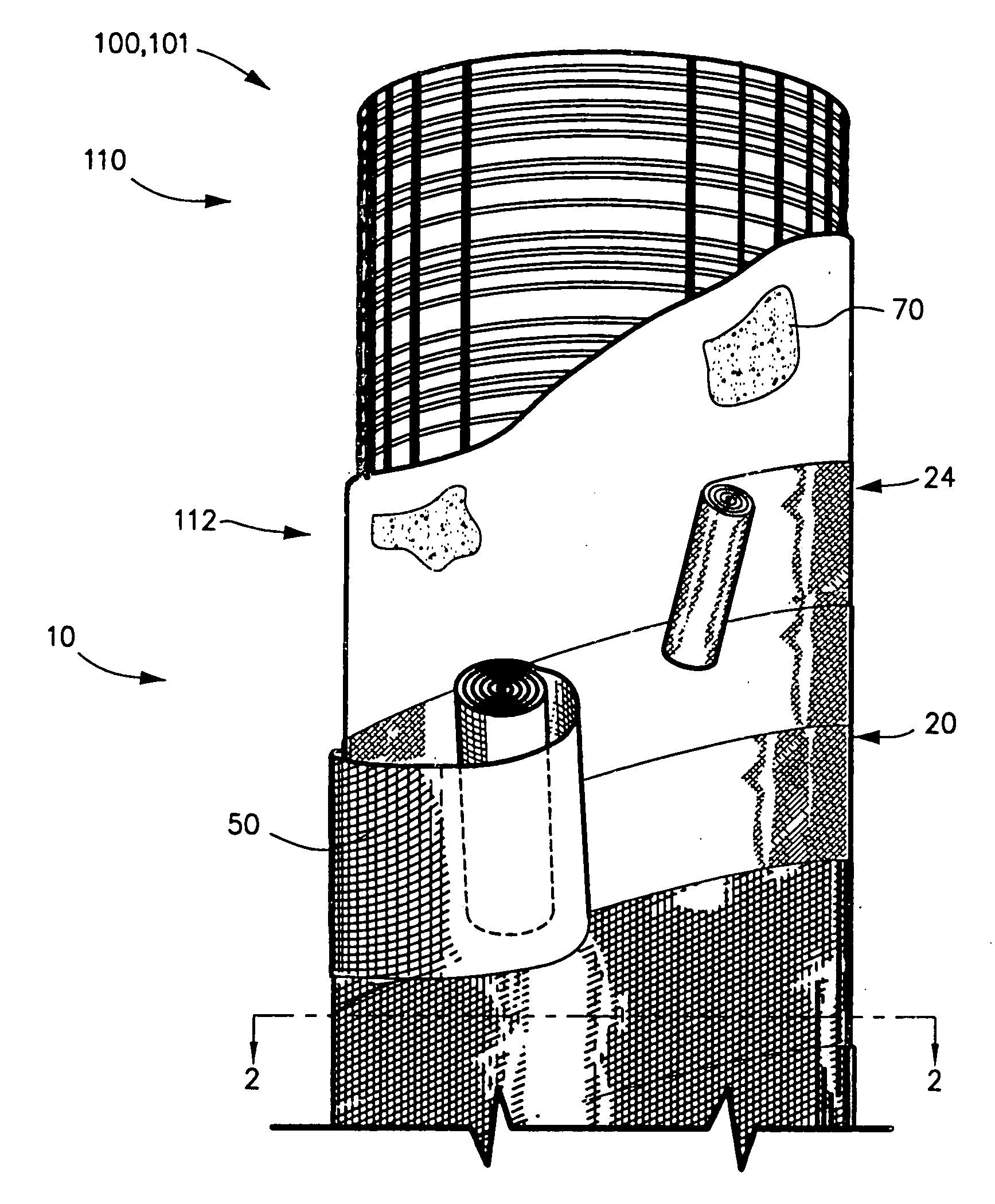Method for repairing metal structure
a metal structure and metal technology, applied in the field of metal structure repair, can solve the problems of extreme corrosion of steel reinforcement, rusting and corroding of steel rods, and deterioration of steel reinforcement, and achieve the effect of strengthening the structure and prolonging the life of the repaired structur
- Summary
- Abstract
- Description
- Claims
- Application Information
AI Technical Summary
Benefits of technology
Problems solved by technology
Method used
Image
Examples
Embodiment Construction
[0025]The present invention is a method for repairing a steel-reinforced concrete structure or structural element 100, such as column 101, that has been damaged by corrosion of the steel rebar 110. FIG. 1 is a stylized representation of the method of the present invention, showing successive steps of the method being performed along the height of a column 101 under repair. FIG. 2 is a cross-sectional view, partly cut away, of the repaired portion of column 101 of FIG. 1, taken on line 2-2.
[0026]Column 101 may be a piling for a wharf or other partially submerged structure, or may be a structural element 100 of any other steel-reinforced concrete structure located in a potentially corrosive environment. Exemplary column 101 generally includes a skeleton of steel reinforcing rods 110, usually known as “rebar,” that were welded or bolted together in the shape desired. Concrete 112 was molded or cast over the skeleton, embedding the rebar 110. Rebar 110 is for increasing the ductility of...
PUM
| Property | Measurement | Unit |
|---|---|---|
| corrosion | aaaaa | aaaaa |
| electrical | aaaaa | aaaaa |
| electrically conductive | aaaaa | aaaaa |
Abstract
Description
Claims
Application Information
 Login to View More
Login to View More - R&D
- Intellectual Property
- Life Sciences
- Materials
- Tech Scout
- Unparalleled Data Quality
- Higher Quality Content
- 60% Fewer Hallucinations
Browse by: Latest US Patents, China's latest patents, Technical Efficacy Thesaurus, Application Domain, Technology Topic, Popular Technical Reports.
© 2025 PatSnap. All rights reserved.Legal|Privacy policy|Modern Slavery Act Transparency Statement|Sitemap|About US| Contact US: help@patsnap.com


